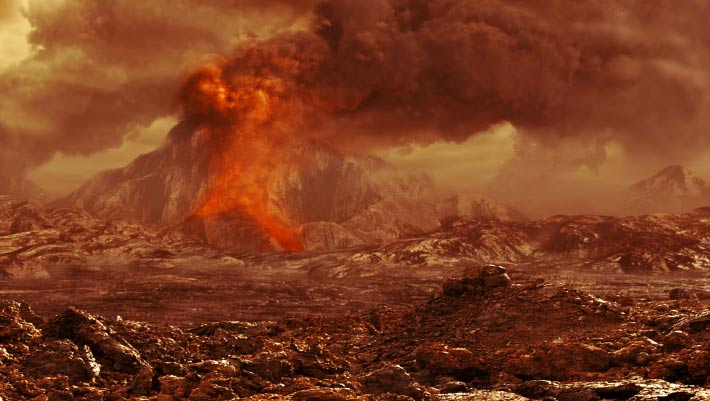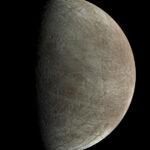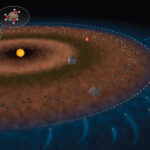Planetary scientists have examined volcanic areas on Venus that were imaged two or three times by NASA’s Magellan spacecraft and identified a 2.2-km2 volcanic vent that changed shape in the eight months between two radar images.
“Venus is nearly the same size and mass as Earth,” said University of Alaska Fairbanks Geophysical Institute’s Professor Robert Herrick and Dr. Scott Hensley from NASA’s Jet Propulsion Laboratory.
“Compositional constraints are consistent with Venus having an Earth-like abundance of radioactive elements, which release heat that might drive volcanic activity.”
“The number of impact craters on Venus indicates a mean surface age of a few hundred million years.”
“However, many of the craters have morphologies that appear to have been modified by volcanic processes; if so, it could mean the average surface age is only tens of millions of years, as young as Earth’s ocean basins.”
“The vast majority of Earth’s volcanism is associated with crust formation at mid-ocean ridges or volcanic arcs above subduction zones.”
“Venus does not have current plate tectonics. Geodynamic models of Venus that match the geological and geophysical observations disagree on the expected current level of volcanism, producing various predictions that it could be lower than, the same as, or many times higher than the level of hot spot volcanism on Earth.”
“On Earth, the Hawaiian volcanic hot spot erupts every few years,” they added.
“There are several dozen volcanoes on Venus with sizes and gravity signatures indicative of underlying hot mantle plumes larger than Hawaii’s Big Island.”
“It has been predicted that multiple basaltic eruptions might occur over the course of a Venusian sidereal day (243 Earth days).”
“Extending this analogy predicts lava flow areas covering several tens of kilometers over the same period.”

Topography and image of the study area on Venus; color indicates elevations, measured relative to the mean planetary radius from gridded Magellan altimetry. Image credit: Robert Herrick & Scott Hensley, doi: 10.1126/science.abm7735.
In the research, Professor Herrick and Dr. Hensley examined radar images of Venus’ surface collected by NASA’s Magellan spacecraft between 1990 and 1992.
They focused on an area containing two of Venus’ largest volcanoes, Ozza and Maat Mons.
“Ozza and Maat Mons are comparable in volume to Earth’s largest volcanoes but have lower slopes and thus are more spread out,” Professor Herrick said.
“Maat Mons contains the expanded vent that indicates volcanic activity.”
“We compared a Magellan image from mid-February 1991 with a mid-October 1991 image and noticed a change to a vent on the north side of a domed shield volcano that is part of the Maat Mons volcano.”
“The vent had grown from a circular formation of 2.2 km2 to an irregular shape of about 4 km2.”
“The later image indicates that the vent’s walls became shorter, perhaps only a few hundred feet high, and that the vent was nearly filled to its rim.”
The researchers speculate that a lava lake formed in the vent during the eight months between the images, though whether the contents were liquid or cooled and solidified isn’t known.
They also offer one caveat: a nonvolcanic, earthquake-triggered collapse of the vent’s walls might have caused the expansion.
However, vent collapses of this scale on Earth’s volcanoes have always been accompanied by nearby volcanic eruptions; magma withdraws from beneath the vent because it is going somewhere else.
“The surface of Venus is geologically young, especially compared to all the other rocky bodies except Earth and Jupiter’s moon Io,” Professor Herrick said.
“However, the estimates of how often eruptions might occur on Venus have been speculative, ranging from several large eruptions per year to one such eruption every several or even tens of years.”
This research is described in a paper in the journal Science.
_____
Robert R. Herrick & Scott Hensley. Surface changes observed on a Venusian volcano during the Magellan mission. Science, published online March 15, 2023; doi: 10.1126/science.abm7735




